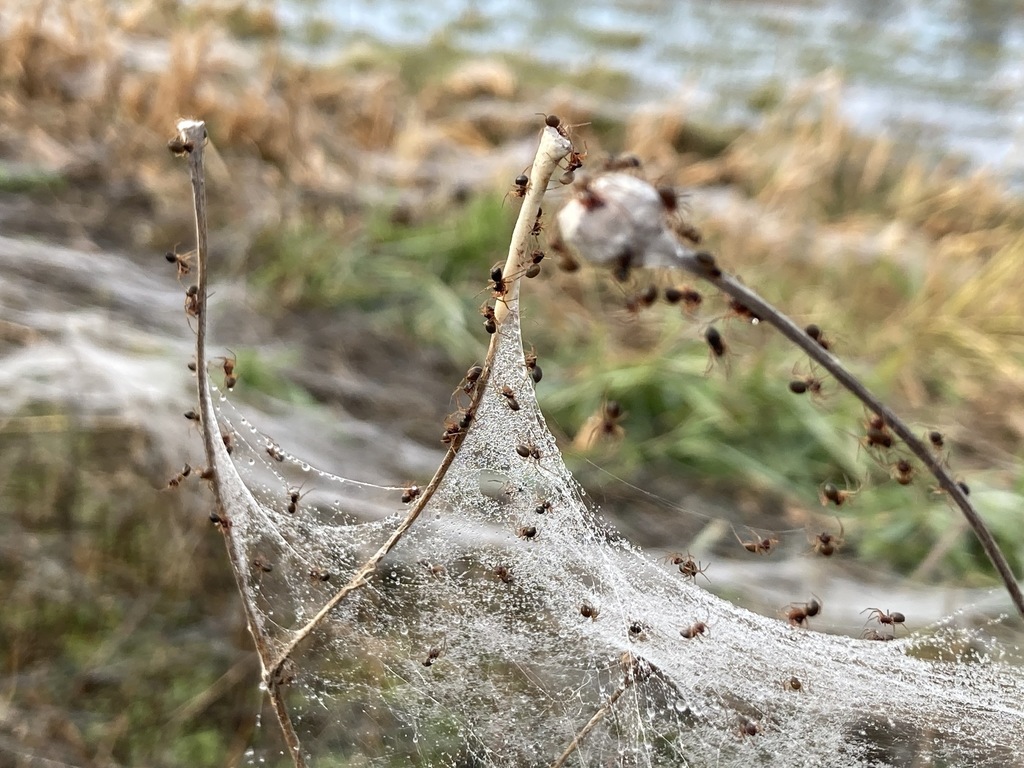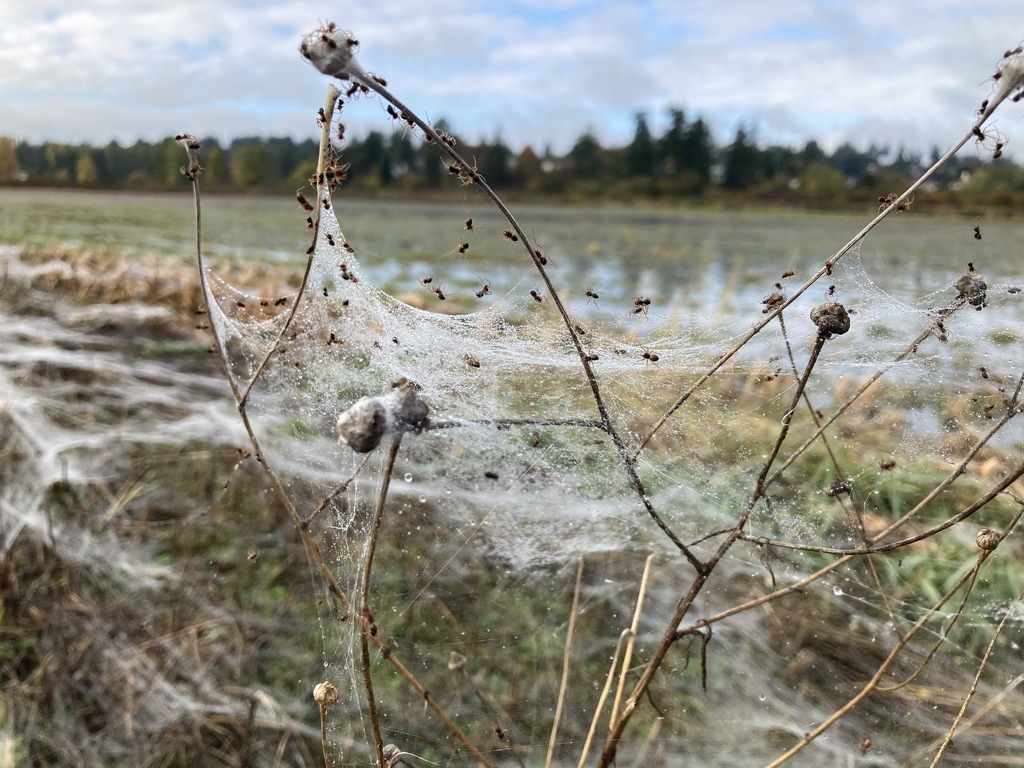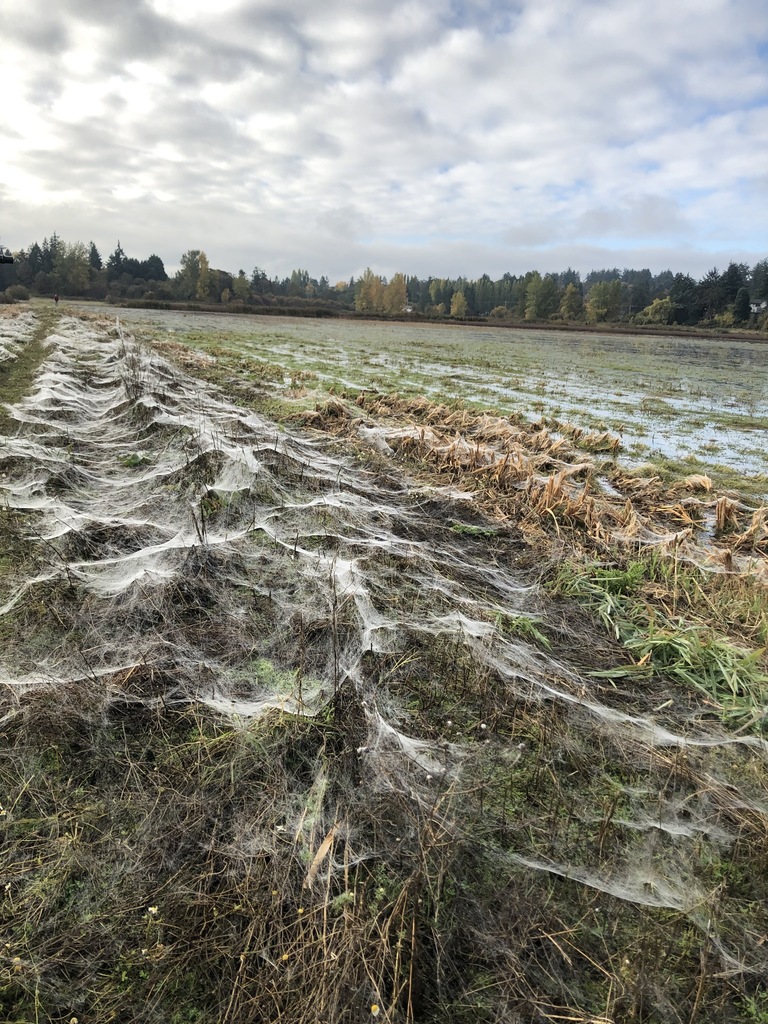Spiders Getting Into the Spirit of Halloween



The timing is perfect. Neighbourhoods are preparing for the one night of the year people of all ages have fun while being scared. Everywhere you go you see fake spider silk draped over shrubs and around porches - big swaths of webbing reminiscent of the movie Arachnophobia or scenes from Harry Potter or Lord of the Rings. Sometimes there is even a big scary spider tucked into the fake web. Watch out for Shelob!
Recently some real spiders in the Victoria area did something that looked like they were also getting into the spirit of Halloween by creating great swaths of real spider web in an area of Panama Flats. These mass dispersal events, where literally thousands of spiders all climb to a high point and put out threads of silk to catch the wind and carry them away, are not necessarily rare events, but people aren’t always there to bear witness to it and take photos like these great images by Heather Meidinger, Gillian Lawson, and Teri Wickes. These images were taken October 20, 2021 and then sent to Robb Bennett for help with the identification and an explanation.
This is not Robb’s first involvement in an event like this: the biggest mass dispersal event ever reported in British Columbia occurred in the McBride area in 2002 and when that happened the species involved turned out to be to be Collinsia ksenia. This is a very common and widespread spider in the family Linyphiidae. Just a few millimetres across and leaving a farm field by the hundreds of thousands, the 60-hectare McBride spider event was so dramatic it made international news! This most recent event was on a much smaller scale and involved three widespread species from the same family of spiders: Erigone aletris, Oedothorax alascensis, and Bathyphantes brevipes. Del Meidinger collected the specimens, and it was the Erigone aletris that dominated the samples and was the most responsible for the event - about 100 males and females in the sample. The other two species were just caught up in all the happenings. see Erigone aletris here
The real question is why does this happen? Why do all the spiders in a particular area decide it is time to leave? These are not immature spiders looking to find a new place to live; these are adult spiders that have probably been living in the area for several months. The answer is simply: we do not know. In the case of Panama Flats, a somewhat obvious reason might be flooding. The fields were dry and perfect spider habitat for the past few months, but the fall rains have arrived and water is starting to fill the low spots. Although there are some aquatic spiders that actually hunt and swim underwater, the species involved in this mass dispersal event are not known to be aquatic.
What we do know is that the result looks like the scary Halloween spider webs draped throughout neighborhoods, but much more beautiful and infinitely more interesting. From the perspective of people who appreciate and study spiders, Halloween and scary movie scenes perpetuate fear and loathing for a group of arthropods that are fascinating, often beautiful, and, in all but a few cases, completely harmless.
PS: We are excited to be able to show off a mapping tool to help with spider identifications. It is currently being hosted by the Victoria Natural History Society (Interactive Spider Distributions of BC - mapping function in the top right) and is still in “test” mode, but we welcome any feedback users can provide. David Blades, the brains behind the mapping, has indicated that the framework is all free and could be used by others for the taxon they work on. So cool!
PSS: If you have enjoyed reading about this, want to learn more about spiders, and/or want to contribute to the project with your own observations then please join The Spider Diversity of British Columbia Project - the more the merrier!





Comments
Wow! This is spectacular! Thanks for sharing. :)
Add a Comment